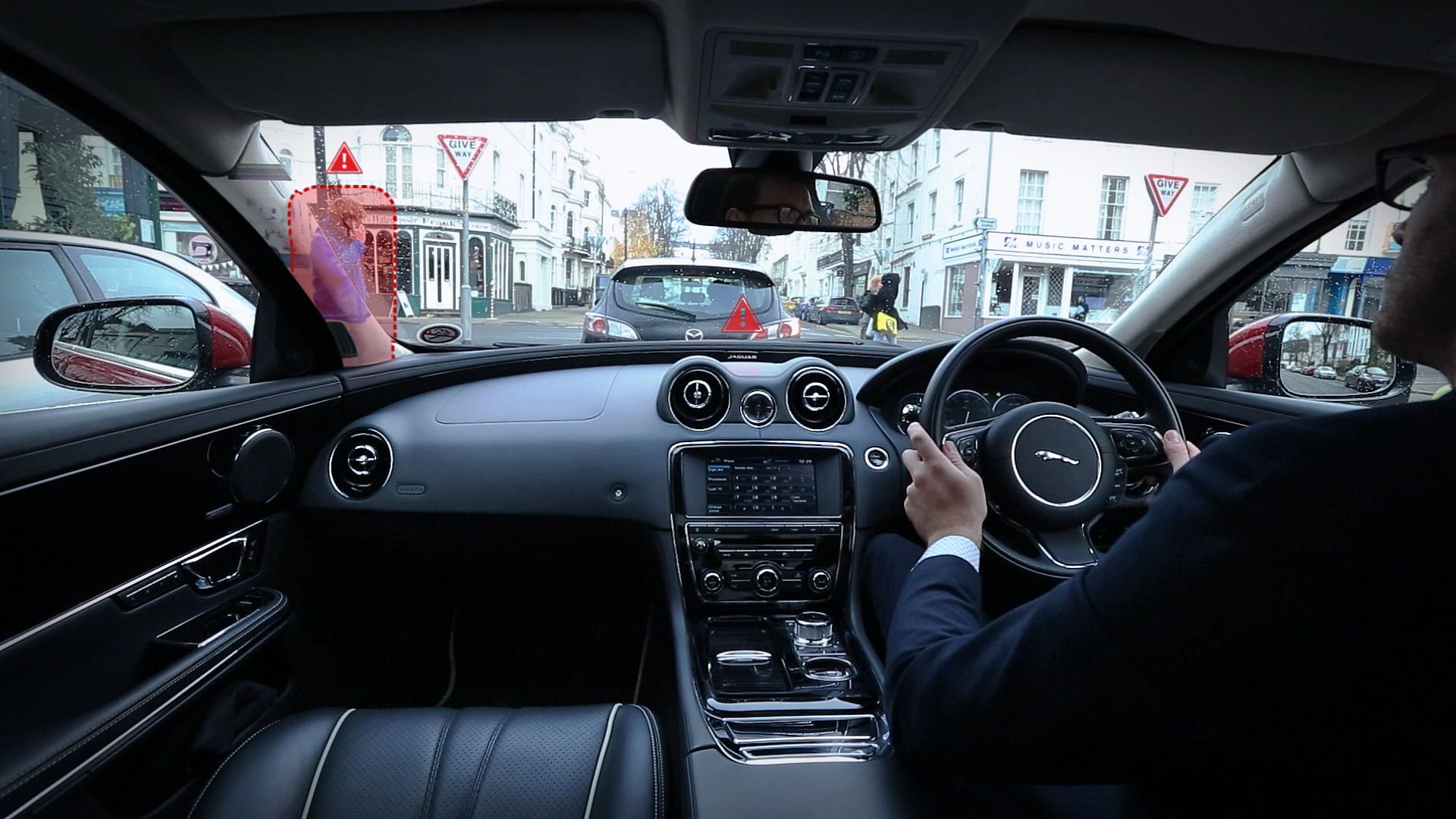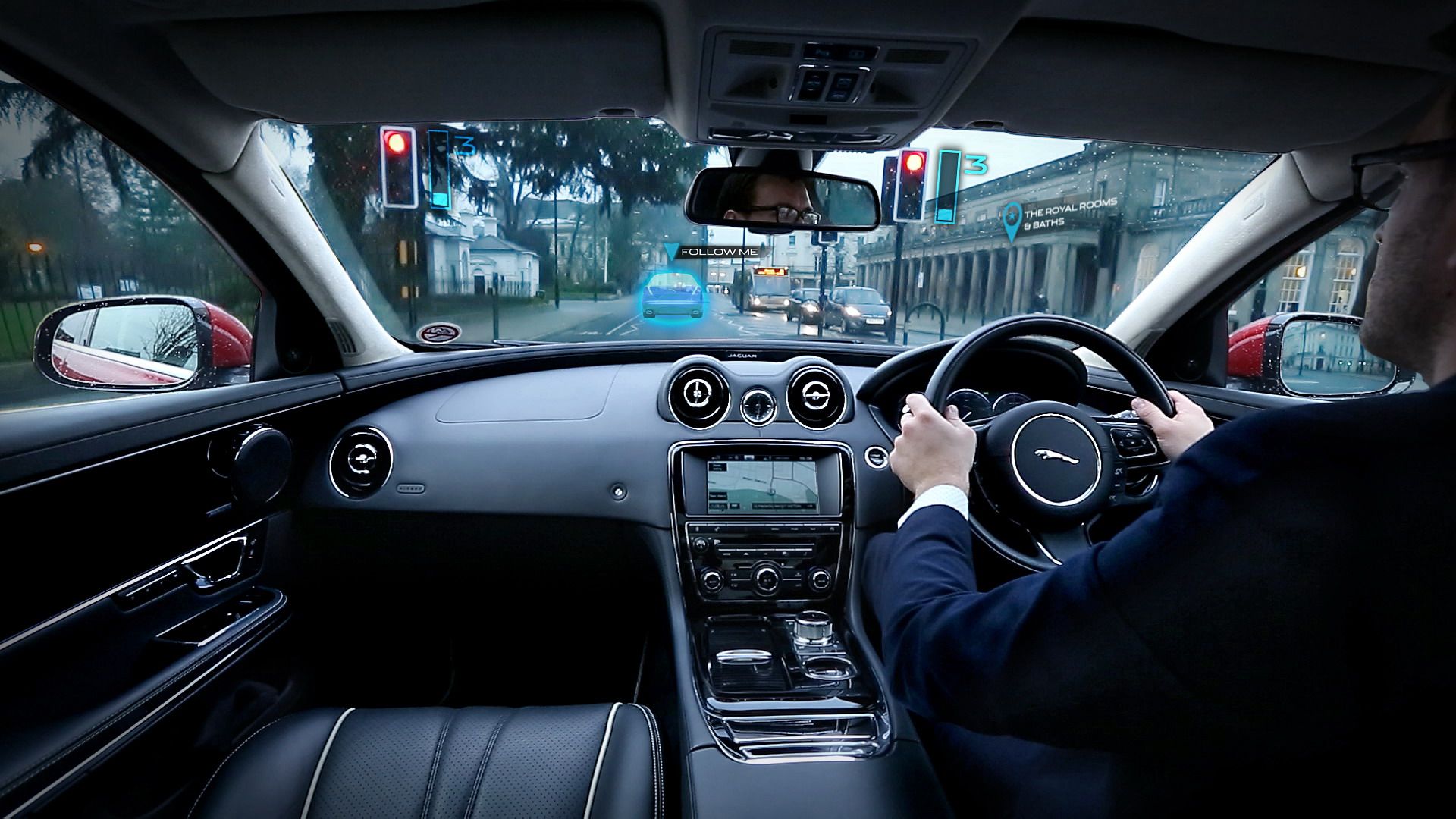“Invisible A-pillars” and “Ghost Car Navigation” are two things you’re more likely to find in video games rather than in real-life cars, but Jaguar->ke39 Land Rover->ke46 is looking into a new project that would bring those two technologies to life. The project, called 360 Virtual Urban Windscreen, is being developed to create a future where drivers won’t have to worry about blind spots and getting lost on the road.
The two technologies are pretty neat and follow a path JLR began at the 2014 New York Motor Show->ke226 when it unveiled the 'Transparent Bonnet Concept' on the Land Rover Discovery Vision Concept. The 360 Virtual Urban Windscreen is the next step toward turning the windshield into a fully integrated tool that serves more than just its wind-shielding purpose.
According to JLR Director of Research and Technology Dr. Wolfgang Epple, the new technology->ke1701 aims to reduce the potential for accidents and ultimately enhance a driver’s urban driving experience by creating an interactive tool that helps improve visibility and tells the driver what to do in certain road conditions.
You would think that such advancements would be met with excitement and wide-eyed amazement. But if you really think about it, it’s hard to argue against those of the mindset that these technologies, while novel and pretty cool visually, actually add more distractions to a driver when his attention should be on the road ahead and not on the information the windshield displays.
Then again, you can’t fault JLR for trying to pioneer these technologies. If it’s not going to do it, there’s no doubt that somebody else will. Now, the onus should be on finding a happy medium where drivers can take full advantage of these new tech options without having to compromise their full concentration on the road.
Click past the jump to read more about Jaguar-Land Rover's "360 Virtual Urban Windscreen".
Why it matters
There's always a place in the industry for technological advancements like the ones JLR is trying to pioneer. The ‘Follow-Me Ghost Navigation, in particular, has the potential be a really cool addition on any car, especially if you’re familiar with how it works in video games. At the same time, the ‘360 Virtual Urban Windscreen’ also comes with a lot of merits, not the least of which is its ability to improve visibility and to give drivers up-to-the-second information to help them with their driving.
But like we said, these new technologies, while serving proper functions, need to be harnessed so that they don’t become impediments to the driver. If you thought navigating around your infotainment systems was complicated enough, that wouldn’t compare to the sophistication of actually having to feverishly check your windscreen for driving info while trying to keep your eyes on the road at the same time.
We’re excited to see that Jaguar Land Rover is spending a lot of time developing these new driver-aid technologies. At the very least, we know that the automaker is working hard to provide us with technologies that could lead to improved and safer driving on the road. Now it’s just a matter of working out the kinks to make sure that these new systems don’t dilute driver concentration by effectively doing all the hard work for us.
Jaguar-Land Rover's "360 Virtual Urban Windscreen" in detail
At the 2014 New York Auto Show, Jaguar Land Rover revealed the Transparent Bonnet concept, a revolutionary new technology that allows the bonnet, or hood, as we like to call it here, to provide an augmented-reality view of the terrain that lies ahead of the 2014 Land Rover Discovery Concept. The technology utilizes a camera installed on the concept’s grille to capture data that will then be sent to a Head-Up Display unit inside the cabin of the SUV, giving the driver what JLR describes as an unobstructed "see-through" view of the road or terrain ahead. Great, right?
Well, JLR recently followed up that innovation by announcing a new tech system called the ‘360 Virtual Urban Windscreen.’ Just like the Transparent Bonnet, the 360 Virtual Urban Windscreen was developed with safety in mind, specifically to eliminate the so-called blind spots that always seem to hamper our line of sight.
With the new technology, JLR managed to embed screens into the surfaces of the A- and B- pillars. Each of these screens are designed to capture live video footage of angles that are normally blocked by the pillars. At the right time, these exterior cameras project images onto the screens depending on the driving situation, essentially turning them transparent. If the car is going to make a right turn, the screen on the right A-pillar immediately turns transparent to give the driver a full and unimpeded view of the street the car is turning into. The tech works the same way if a driver wants to change lanes or is approaching a busy intersection.
JLR is also working on connecting this technology to the Cloud, which could lead to a laundry list of real-time information being displayed on a windshield. You know, things like gas prices in an approaching gas station or the number of open parking spots in a nearby parking garage. It sounds cool when JLR is describing it, but this is where the “too much information” angle comes into the picture.
Now we come to the ‘Follow-Me Ghost Car Navigation.’ This is the technology that has a lot of promise, largely because it addresses a common problem drivers with no sense of direction suffer from all too often. Instead of displaying a complicated city or, God forbid, topography map on the windshield, the Follow-Me Ghost Car Navigation projects a holographic image of a vehicle just ahead of the car. This image will then serve its purpose as a guide of sorts, telling you where to go and what streets to turn into as if it’s leading you to your destination. If any of you have ever played Ridge Racing in the old PlayStation consoles, you’ll know exactly what this new tech is capable of doing.



